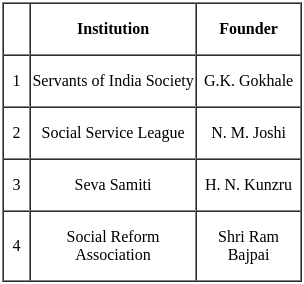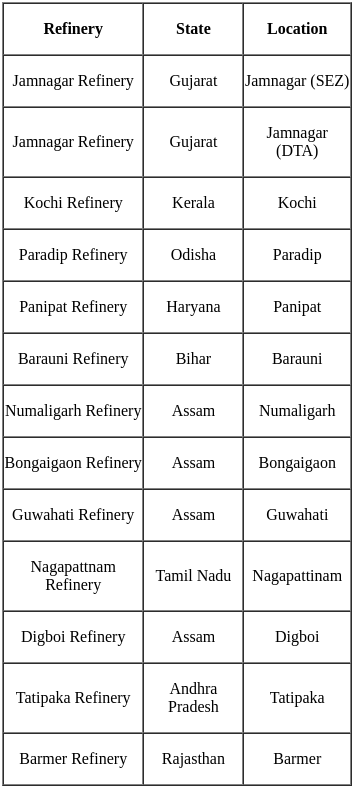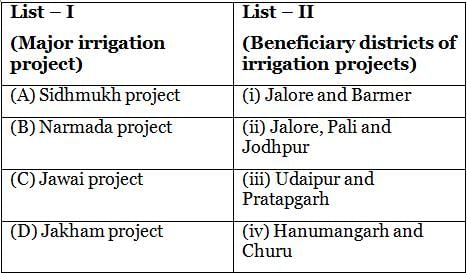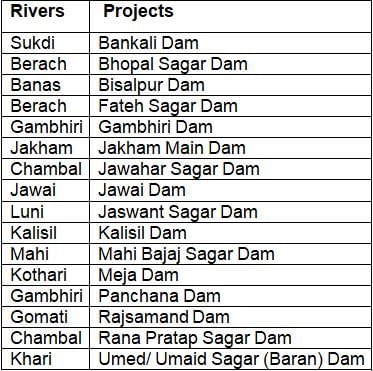RPSC RAS Prelims Mock Test - 9 - RPSC RAS (Rajasthan) MCQ
30 Questions MCQ Test - RPSC RAS Prelims Mock Test - 9
The Comptroller and Auditor - General of India can be removed from his office in like manner as
Which of the following statement is incorrect in reference to compost?
On which of the following dates, the President of India, using his powers, declared by proclamation that a grave emergency existed where the security of India was threatened by internal disturbance?
Which sanctuary in Gujarat is the smallest in India and is known for protecting the Great Indian Bustard?
What technology was used to facilitate the birth of the Great Indian Bustard chick?
Which of the following rulers does not belong to Gurjara - Pratihar dynasty?
If percentage of increase of total number of vehicles from 2000-01 to 2010-11 is made equal to the percentage of increase of total vehicles from 1990-91 to 2000-01, then total number of vehicles in 2010-11 would be equal to (in lakhs):
Which of the following polyherbal product has NOT been developed by the Defence Research and Development Organisation (DRDO):
Which of the following Chief Ministers has not held the post of the leader of the Opposition in Rajasthan Legislative Assembly?
(A) Haridev Joshi
(B) Shivcharan Mathur
(C) Ashok Gehlot
(D) Vasundra Raje
Select the correct answer using the code given below:
Where was the Great Indian Bustard chick born under the Species Recovery Programme?
As per 2011 Census, which districts of Rajasthan are having lowest percentage of Scheduled Tribe Population in their total population?
On 24th June 2018, India's team of four Para-swimmers crossed the English Channel in a record time of 12 hours and 26 minutes. Out of them, one was from Rajasthan. Who was he?
Which of the following terminology is/are mentioned in the Preamble of the Right to Information Act, 2005?
(A) Transparency of Information
(B) Revelation of Information
(C) Informed Citizenry
(D) Paramountcy of the democratic ideal
Select the correct answer using code given below:
Assertion (A): Cost inflation is caused by the shift in the aggregate supply curve.
Reason (R): Shift in aggregate supply curve takes place because of the increase in wages.
Which of the following plant, grown in non-forest area has been omitted from the definition of trees in the Indian Forest (Amendment) Act 2017?
Growth rate of GSDP (Gross State Domestic Product) at constant prices (2011 - 12) for the year 2017 - 18 in Rajasthan was
Who among the following negotiated Subordinate Alliances of 1817-18 with the Princely States of Rajputana?
Proposed oil refinery at Pachpadra, Barmer is a joint venture of
What is the state flower of Rajasthan as found in the Desert National Park?
What is the percentage of urban population in India and Rajasthan respectively as per Census 2011?
Which statements are correct from the following?
(A) Marble development and Conservation Rule - 2002
(B) Rajasthan Mineral Policy - 2015
(C) District Mineral Foundation Trust Rules - 2016
(D) Rajasthan Minor Mineral Concession Rules (Amended upto May 2016)
The Bharat Electronics Ltd. (BEL) is collaborating with ISRO to develop
The 22nd edition of the Malabar Trilateral Naval exercise was held in June 2018. Beside India which other two countries took part in this exercise ?
Which of the following pairs is not correctly matched?

Choose the correct chronological order of the following events:
(i) Lucknow Pact
(ii) Formation of the Swaraj Party
(iii) Jallianwala Massacre
(iv) Death of Bal Gangadhar Tilak
Select the answer from the following code:
Who created the department of Diwan-i-Arz in Delhi Sultanate?
Which of the following statements are correct in context of Rajasthan State Human Rights Commission?
(A) It was constituted on 18, January, 1999 by notification issued by Government of Rajasthan.
(B) The Commission became functional from March, 2000.
(C) Rajasthan Human Rights Commission is having one chairperson and 3 members in accordance with the provision of the Protection of Human Rights (Amendment) Act, 2006.
(D) One of its former Chairman's has retired judge of Supreme Court of India.
Select the correct answer using code given below:


























